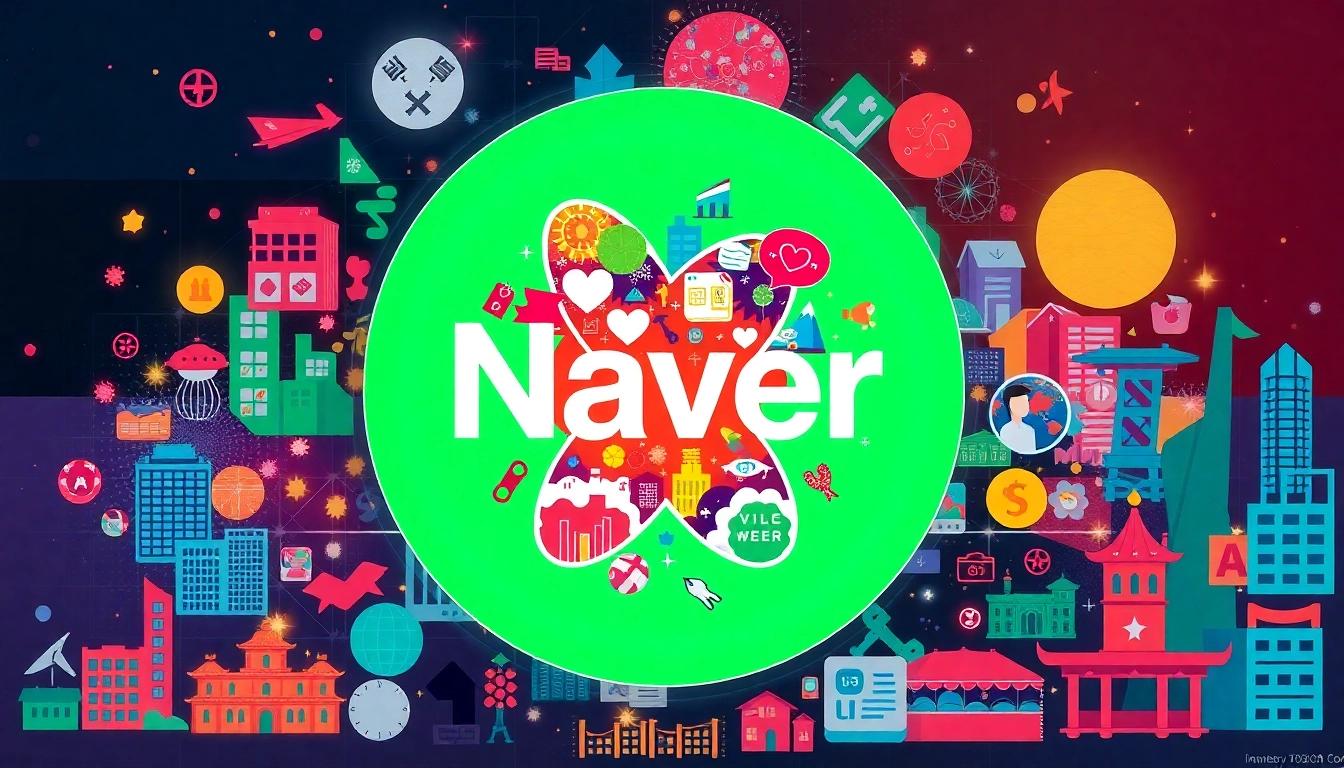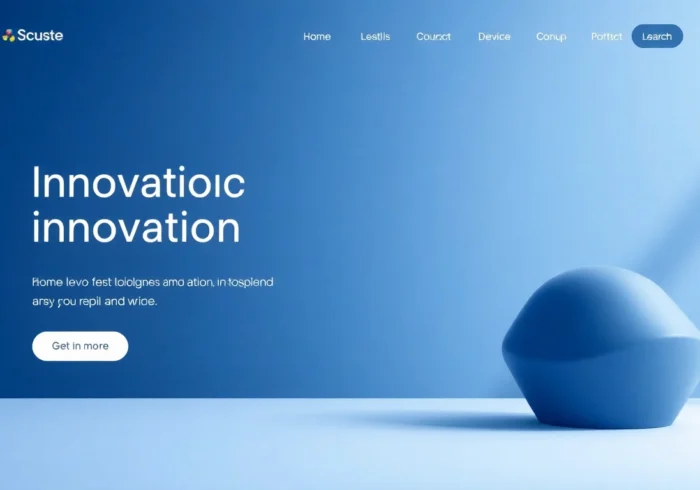Unlocking the Power of Naver: Comprehensive Strategies for Dominating South Korea’s Digital Ecosystem
In the rapidly evolving digital landscape of South Korea, Naver has established itself as a powerhouse, influencing how millions of users access information, communicate, and shop online. As South Korea’s leading online platform operated by Naver Corporation, it offers an extensive suite of services ranging from search engines and email hosting to blogging and mobile payments. For businesses and content creators aiming to expand their footprint within this vibrant market, understanding Naver’s ecosystem is essential. If you’ve ever wondered how to leverage Naver effectively — whether for SEO, branding, or direct customer engagement — this comprehensive guide will equip you with the knowledge, strategies, and practical steps necessary to excel. To start, explore more about Naver at naver and how it can integrate with your broader digital marketing plan.
1. Understanding Naver’s Ecosystem and Its Market Dominance
1.1 Overview of Naver’s Core Services and Features
Naver, launched in June 1999 by founder Lee Hae-jin, has grown into South Korea’s most dominant online portal. Its core offerings include a highly sophisticated search engine tailored for Korean language nuances, along with diverse services such as Naver Blog, Naver Cafe (community forums), Naver Maps, Naver Pay (mobile payments), and Naver Webtoon (digital comics). These platforms are tightly integrated, creating a seamless user experience that keeps users within the Naver ecosystem. For example, Naver’s search engine is optimized with AI-driven algorithms that prioritize local content and trending topics, making it a first stop for millions seeking news, shopping, entertainment, and services.
Understanding these core services provides insight into where and how digital engagement occurs, allowing brands to craft targeted strategies across Naver’s varied channels.
1.2 How Naver Compares to Global Search Engines
While Google dominates globally, Naver holds a unique position in South Korea, accounting for approximately 70% of the nation’s search market share. Unlike Google, which emphasizes a broad search index, Naver’s algorithm prioritizes localized content, community-driven platforms, and niche verticals like WEBTOON and local news. This regional focus means that SEO and content strategies effective on Google may require significant adaptation for Naver, emphasizing user engagement within its platforms.
Naver’s integrated ecosystem creates a competitive environment where content that performs well on Naver often benefits from cross-platform visibility, such as blogs, cafes, and shopping. Understanding these distinctions is crucial for international brands seeking to penetrate the South Korean market.
1.3 Naver’s Role in South Korea’s Digital Landscape
As a cornerstone of South Korea’s digital life, Naver has become an essential touchpoint for everything from daily news and social interaction to e-commerce. Its influence extends into mobile payments and artificial intelligence, positioning Naver as a full-spectrum ecosystem that supports both individual consumers and businesses. For instance, Naver Maps is indispensable for navigation and local business discovery, while Naver Shopping has transformed e-commerce within Korea.
This comprehensive digital integration means that to succeed in South Korea, brands must align their strategies with Naver’s infrastructure, leveraging its tools for visibility, customer loyalty, and data insights.
2. Optimizing Content for Naver Search Algorithm
2.1 Naver SEO Best Practices for Content Creators
Naver’s search algorithm is distinct and requires tailored optimization strategies. Key practices include prioritizing localized keywords, creating high-quality and engaging content for native Korean audiences, and consistently updating Blogs and Cafes. Naver favors content that fosters community engagement and user interaction, so incorporating questions, comments, and active moderation can enhance visibility.
Furthermore, leveraging Naver’s content types—such as Naver Blog posts and Café forums—can significantly boost organic rankings. Optimizing titles, meta descriptions, and tags with keyword relevance remains fundamental, but the focus must be on addressing the specific interests and cultural nuances of Korean users.
2.2 Keyword Strategies for Naver’s Search Environment
Effective keyword research involves utilizing Korean search terms and understanding how local users phrase their queries. Keyword tools specific to Korea, such as Naver Keyword Planner or third-party platforms, can help identify trending search terms. Incorporating long-tail keywords that reflect local dialects or specific intents often yield higher engagement.
Also, consider the context around keywords. Naver’s AI emphasizes semantic relevance, so content should be comprehensive and naturally incorporate related terms. Frequent analysis of competitors’ top-ranking pages can uncover keyword gaps and opportunities.
2.3 Leveraging Naver Cafe and Blog Features for Higher Visibility
Naver Cafe and Blog are two of the most powerful platforms for content marketing. Cafes serve as active community hubs and are ideal for building relationships within niche markets, while Blogs are suitable for long-form content, reviews, and expert insights. Both formats benefit from consistent activity, authentic engagement, and keyword optimization.
Proactively participating in Cafes relevant to your industry or niche can enhance brand awareness and credibility. Meanwhile, creating valuable Blog content that answers common user questions or provides unique insights helps establish authority and increases traffic from Naver’s internal search results.
3. Enhancing Naver Business Presence and User Engagement
3.1 Setting Up Effective Naver Business Accounts
Establishing a professional presence on Naver requires creating official brand pages, such as Naver Business Space or Naver Place (similar to Google My Business). These profiles should include accurate, detailed information, high-quality images, and regularly updated content. Verified accounts gain more trust and visibility in local searches and map results.
Optimizing your Naver Business Profile for local SEO involves integrating relevant keywords, encouraging customer reviews, and actively responding to inquiries. Such engagement signals authority to Naver’s algorithms, resulting in higher rankings.
3.2 Utilizing Naver Ads and Promotional Tools
Naver offers a comprehensive suite of advertising options including Power Link Ads (similar to Google Ads), search ads, display banners, and Naver Post promotions. Targeted advertising allows precise demographic and geographic targeting, optimizing ad spend efficiency.
Case studies show that businesses leveraging Naver’s paid advertising experience substantial growth in visibility and revenue. For maximum impact, combine organic optimization with paid campaigns, retargeting users who have engaged with your content or visited your site.
3.3 Building Community and Customer Loyalty via Naver Platforms
Ongoing engagement is vital. By maintaining active Naver Cafes and Blogs, fostering user interaction, and providing exclusive content or discounts, brands can cultivate loyal communities. Incentives such as loyalty programs integrated with Naver Pay further deepen customer relationships.
Integrating user-generated content, reviews, and testimonials on your Naver profiles enhances authenticity and encourages word-of-mouth advocacy within the community.
4. Integrating Naver with Your Omnichannel Marketing Plan
4.1 Cross-Promoting Content Across Naver and Other Channels
To maximize reach, coordinate your content marketing across Naver and global platforms. Share blog posts and community updates via social media, and embed Naver-native content into your website. Consistency ensures brand recognition and improves overall digital presence.
Utilize Naver’s internal sharing features to amplify content visibility, such as linking Blog articles within Cafes or sharing posts on Naver Smart Store for e-commerce brands.
4.2 Analyzing Naver Analytics for Data-Driven Decisions
Naver’s analytics tools provide invaluable insights into user behaviors, popular search terms, and engagement metrics. Regular analysis helps refine SEO tactics, tailor content, and optimize advertising strategies. Setting clear KPIs aligned with Naver’s data helps track ROI and adjust campaigns promptly.
4.3 Strategies for Local SEO Optimization Using Naver Maps and Reviews
Naver Maps is an essential tool for local SEO. Ensuring your business is accurately listed, with rich content like photos, keywords, and updated operation hours, boosts local search rankings. Soliciting genuine reviews enhances credibility and encourages higher visibility.
Engaging with local customers through Naver’s review platform and responding to feedback demonstrates commitment to service quality, which positively influences Naver’s ranking algorithms.
5. Future Trends and Innovations in Naver’s Platform
5.1 Naver’s AI and Machine Learning Initiatives
Naver is investing heavily in AI, with initiatives such as AI-powered search, conversational bots, and personalized content recommendations. These advancements promise more intuitive user experiences and better targeting capabilities for marketers.
Brands should prepare by integrating AI-compatible tools and focusing on creating data-rich, engaging content that benefits from Naver’s AI-driven personalization.
5.2 Adapting to Naver’s Evolving User Behaviors
As user behaviors evolve, particularly with rising mobile usage and multimedia content consumption, businesses must adapt their strategies. Emphasizing visual content like Webtoons, videos, and live interactions can improve engagement and stay ahead of trends.
Monitoring user feedback, platform updates, and top-performing content types will guide continuous optimization efforts.
5.3 Preparing for New Features and Market Opportunities
Naver continuously innovates, introducing new features such as expanded e-commerce solutions, AI services, and augmented reality integrations. Staying informed about these developments allows brands to seize emerging opportunities and maintain competitive advantage.
Participating in beta programs and collaborating with Naver Labs can provide early insights and influence future platform features.



